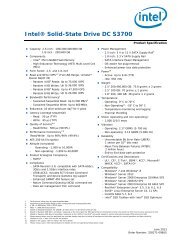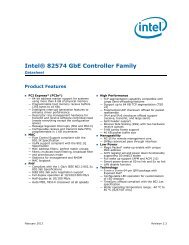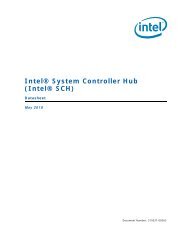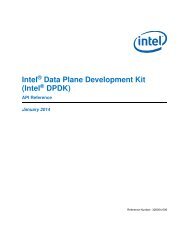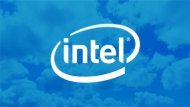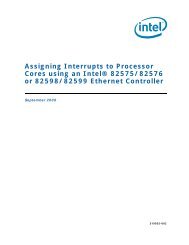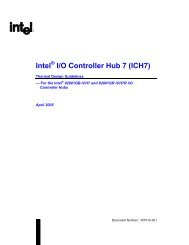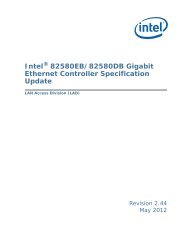Intel Itanium Processor 9300 Series and 9500 Series
Intel Itanium Processor 9300 Series and 9500 Series
Intel Itanium Processor 9300 Series and 9500 Series
You also want an ePaper? Increase the reach of your titles
YUMPU automatically turns print PDFs into web optimized ePapers that Google loves.
Electrical Specifications<br />
Figure 2-7.<br />
TX Return Loss<br />
Figure 2-8.<br />
RX Return Loss<br />
2.4.2 <strong>Intel</strong> ® <strong>Itanium</strong> ® <strong>Processor</strong> <strong>9500</strong> <strong>Series</strong> Requirements for<br />
<strong>Intel</strong> ® QuickPath Interconnect for 4.8 <strong>and</strong> 6.4 GT/s<br />
The applicability of this section applies to <strong>Intel</strong> ® <strong>Itanium</strong> ® <strong>Processor</strong> <strong>9500</strong> <strong>Series</strong>. This<br />
section contains information for slow boot up speed (1/4 frequency of the reference<br />
clock), 4.8 GT/s, <strong>and</strong> 6.4 GT/s, for <strong>Intel</strong> ® QPI <strong>and</strong> <strong>Intel</strong> ® SMI.<br />
For <strong>Intel</strong> ® QPI slow boot up speed, the signaling rate is defined as 1/4 the rate of the<br />
system reference clock. For example, a 133 MHz system reference clock would have a<br />
forwarded clock frequency of 33.33 MHz <strong>and</strong> the signaling rate would be 66.67 MT/s.<br />
32 <strong>Intel</strong> ® <strong>Itanium</strong> ® <strong>Processor</strong> <strong>9300</strong> <strong>Series</strong> <strong>and</strong> <strong>9500</strong> <strong>Series</strong> Datasheet



